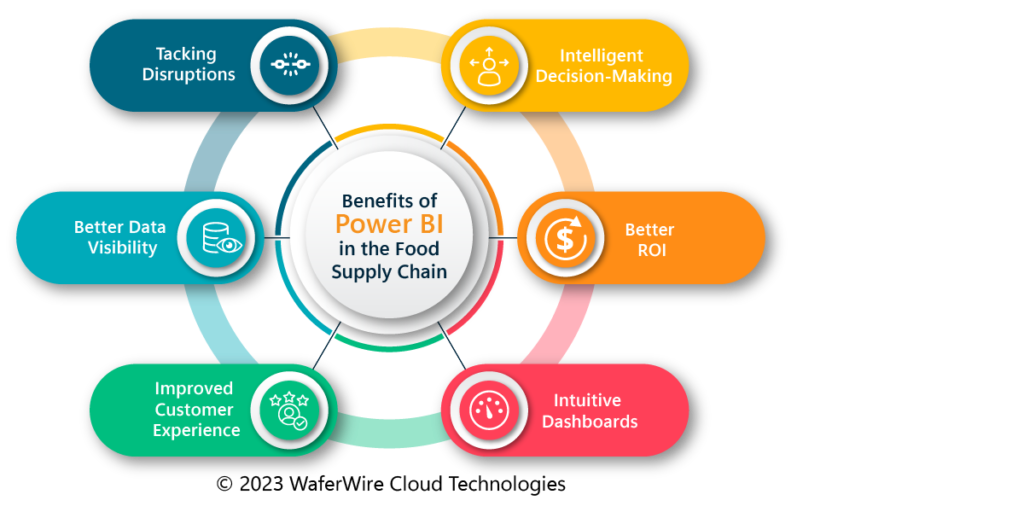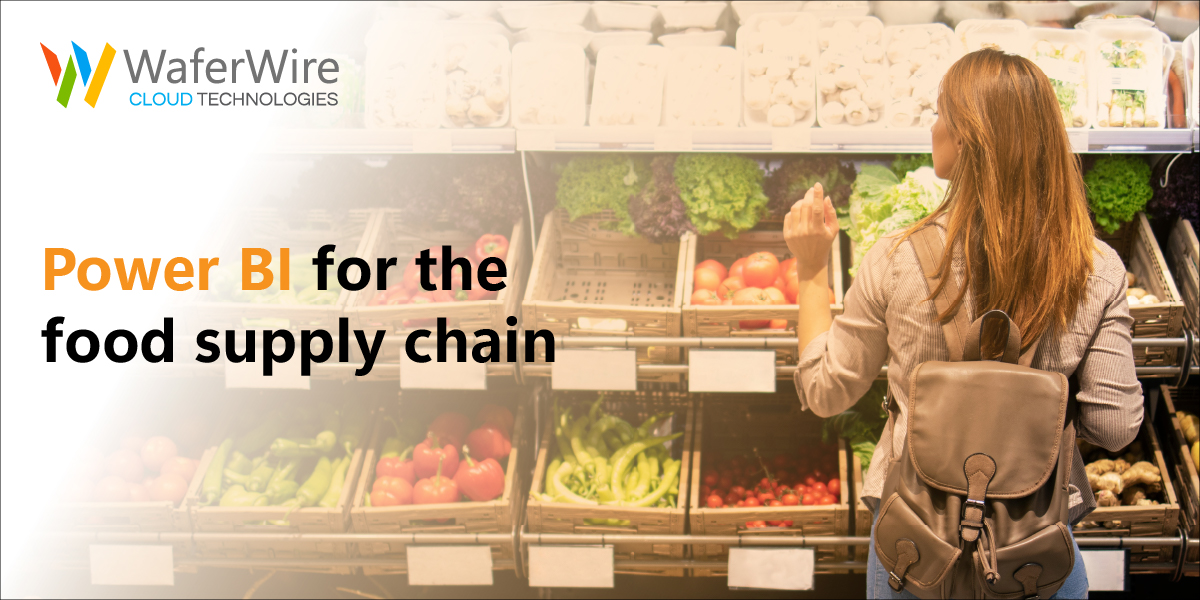Getting the most out of your supply chain is the key to success in today’s digital world.
A range of factors go into food purchases and sales in the current economy.
The COVID-19 pandemic caused severe disruptions in the food supply chain. As a result, there were massive backlogs at all stages of the supply chain: starting with farms, then processing plants, packaging houses, transportation, distribution centers, and supermarkets.
Also, the war between Russia and Ukraine disrupted grain and fertilizer shipments, resulting in fertilizer shortages that affected agriculture.
Climate change also has affected food production, especially specialty crops (fruits, vegetables, tree nuts, spices, and ornamentals). Water shortages, reduced snowpack, severe storms, intense heat waves, and floods all affect the food supply chain. Also, you must deal with cutthroat competition in the international market.
As a result, stakeholders need a better toolkit to understand international markets. To get a bigger picture of the many variables affecting the food supply chain across the world, you must continually monitor your business using an effective management information system to understand how it is doing in the market. Therefore, retailers and food service companies adopt technology quickly to make things easier at all levels.
With a Business Intelligence solution like Microsoft Power BI, you can empower your supply chain operations with the information they need to make intelligent decisions.
Unlock the value of Power BI in the food supply chain
Why Power BI?
Have you noticed that information and intelligence are two different entities?
The data you get from disparate sources is unified, cleansed, and processed into information. But for business-critical decisions, this information must be presented in actionable insights.
Concisely, you must have visualized information for intelligent decision-making.
Enters Power BI.
It is an end-to-end BI platform that unifies data under a single roof from disparate sources, uncovers power insights through visualization, and helps to make business-critical intelligent decisions.
With Microsoft Power BI, you can:
- Empower all levels at your organization to make confident decisions with powerful analytics.
- Reduce cost, complexity, and security risks associated with multiple solutions with an analytics platform that scales
- Discover meaningful insights with hundreds of data visualizations, built-in AI, and tight Excel integration.
- Detect unauthorized access in real-time, label data sensitively, and encrypt it end-to-end.
How can you integrate and leverage Power BI into your existing system?
You can drive efficiency in your supply chain operations by connecting your on-premises ERP system with Power BI.
The ERP system collects loads of data like assets, operations, food inventory, temperature, real-time customer orders and delivery, and workforce data. Power BI unifies all this data under a single roof and provides insights into food delivery operations through visualization. These actionable insights allow the operation team to make business-critical decisions for efficiently managing their supply chain operations.
Benefits of leveraging Power BI in the food supply chain

Tackling disruptions: Unleash the power of historical and real-time data to combat multiple interferences in the food supply chain, like food spoilage, cyber-attacks, weather conditions, geopolitical actions, and others, for better decision-making capabilities.
Better data visibility: Predict risks and make better decisions around order and delivery, asset use, resource allocation, and others throughout the supply chain operations with better data visibility.
Improved customer experience: Drive profitable growth with an exceptional customer experience by offering personalized services and targeted ads. For instance, analyzing customer buying trends helps organizations to develop products accordingly.
Intuitive dashboards: Get a quick overview of your entire supply chain, customer expectations, ongoing trends, day-to-day operations, transportation activities, tender acceptance and rejection, delivery, and many more, through intuitive dashboards.
Better ROI: Enjoy a boost in your ROI with better strategic plans, faster reporting, lower complexity, overhead costs, improved business efficiencies and operations, and better employee productivity and customer satisfaction, all due to Power BI.
Intelligent decision-making: Make informed decisions in your food supply chain business with Power BI’s data-driven ecosystem that highlights future demand trends and consumer behavior and expectations. Also, you can define KPIs, find the best and worst performing KPIs, and find out the areas of improvement with historical and real-time data insights.
Get robust Power BI solutions
for your business
How has Power BI helped a leading food service business to streamline its operations and make intelligent decisions on-the-fly?
One of the biggest food service companies in the UK supplies food items and non-food products to restaurants, cafes, caterers, schools, and delis. It handles everything in-house, from taking orders to delivering items to the customer. Due to a large customer base, you must track routes, assets, and field workers to ensure smooth delivery to several customers. All these operations, from procurement, stock management, and routing to inventory management, order processing, and delivery, everything ran on the ERP. But due to the enormous data volumes created from discrete sources, the company couldn’t unlock the value of data to streamline its operations. The challenges included:
- Lack of insights into various activities
- There is not a single view of the data obtained at different levels in the supply chain.
- Manual tracking of all items.
- No real-time visibility.
- Lack of on-the-go unified data from any device.
- Lack of a 360-degree view of the business.
- There are no means to track customers’ behavior- changes in the decision at the time of delivery, rejecting the item, and so on.
- Real-time monitoring.
To overcome these challenges, the company built a Power BI solution that created a data-driven, self-sufficient business ecosystem and could:
- Create efficient supply chain operations with real-time insights.
- Utilize the power of intuitive rich visuals and reports and make intelligent decisions critical to business at all levels.
- Get interactive dashboards from the consolidated data fetched from discrete sources.
- Boost efficiency by delivering critical insights into various supply chain activities.
- Get in-depth analytics and reports on the products, damages, and losses incurred every month through a unified dashboard.
- Unlock insights to ensure minimal risk during the change in decisions or to identify the food spoilage pattern.
The Power BI solution helped this company to unlock critical insights into the food supply chain. They could save ample time by minimizing efforts; otherwise, they invested in analyzing the data manually. With Microsoft Power BI solution, the food service company could empower its operational team with intelligent decision-making capabilities through interactive, intuitive dashboards, data visualization, and on-the-go reports and analytics. Overall, the solution helped the company manage its supply chain operations a breeze. It gained accuracy and improved customer service.
However, strategizing, designing, and implementing a Power BI solution for your food supply chain may seem daunting, but WaferWire’s Power BI consultants are well-versed in this industry and its challenges. Our BI solutions cater to industry standards, cover your unique business requirements, and address every challenge seamlessly. As Microsoft Gold and Silver Partners, WaferWire holds expertise in leveraging the power of this end-to-end BI platform to develop best-in-class supply chain solutions, covering all your technical needs. So, if you want to save thousands of dollars and boost revenue with less complexity, cost, and resources, then; let’s discuss Power BI and how it can empower your supply chain business.
